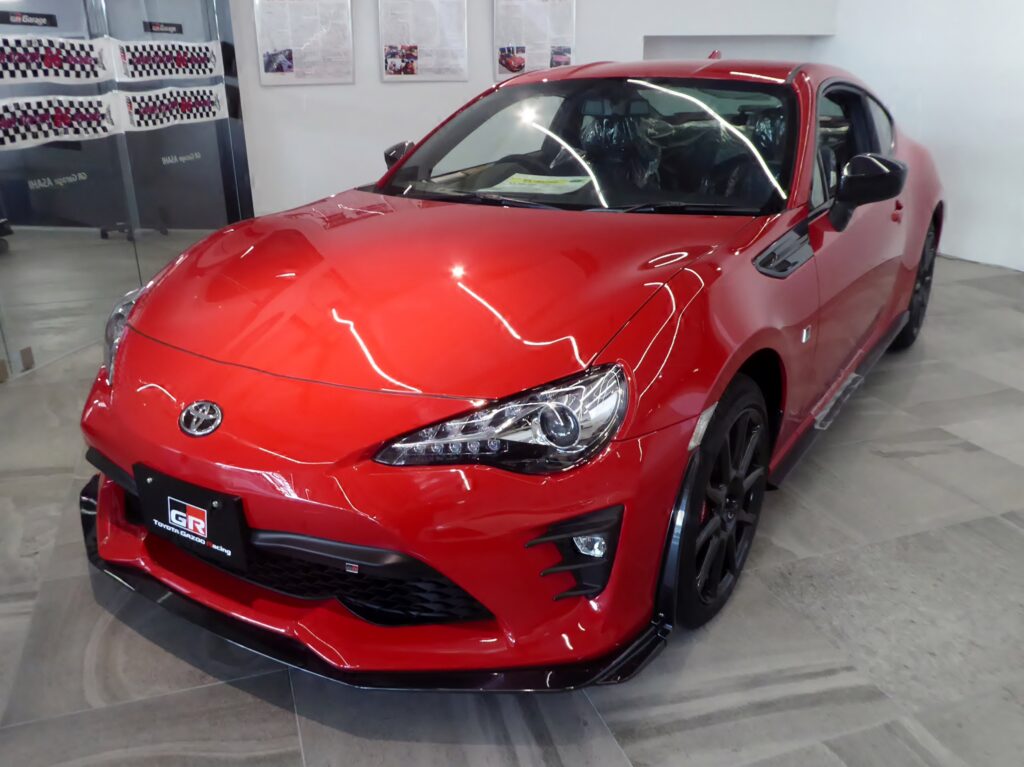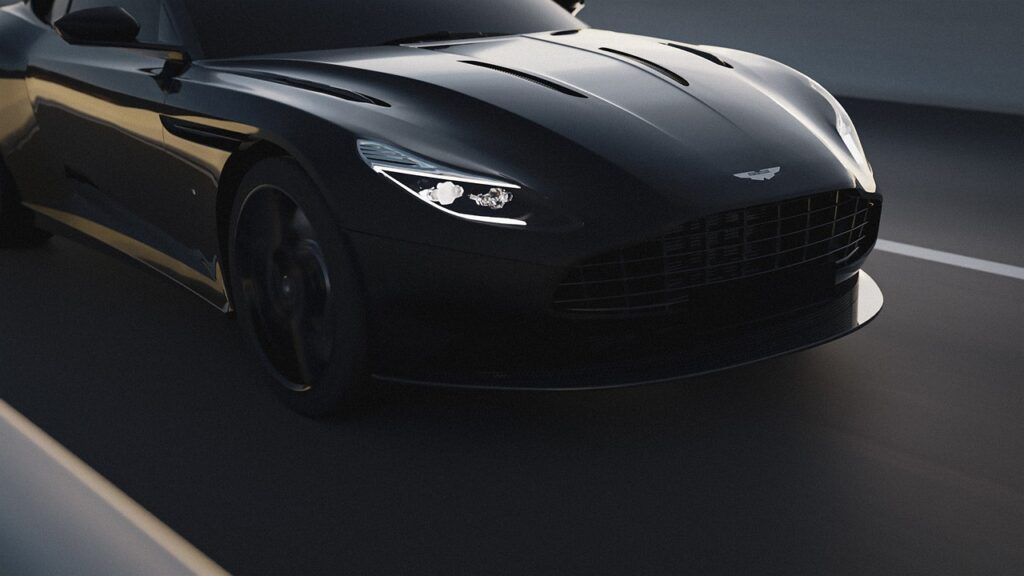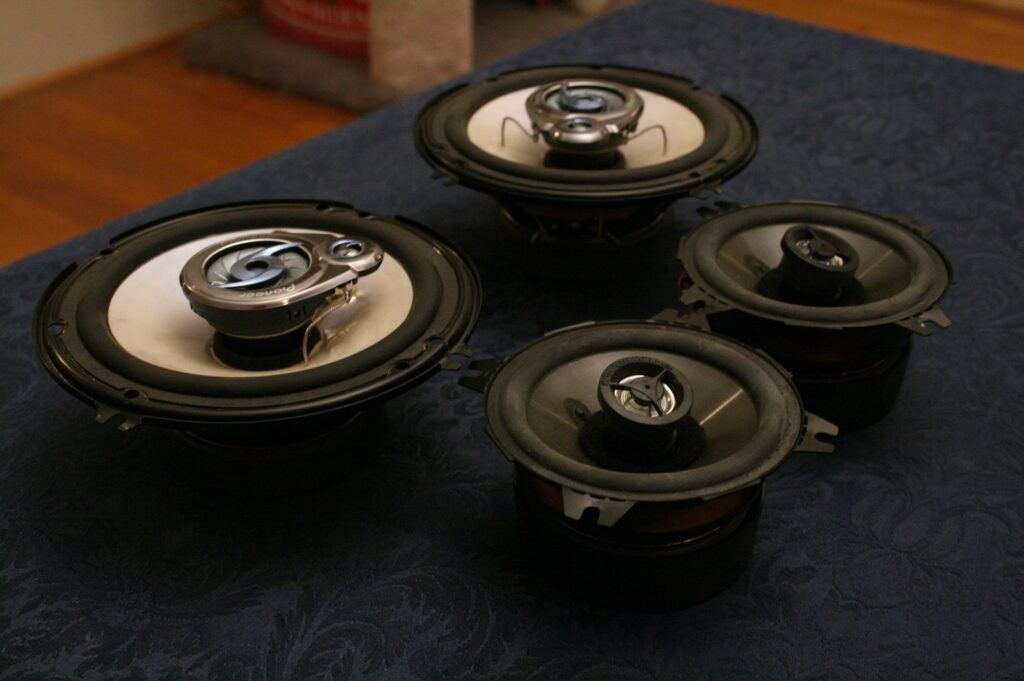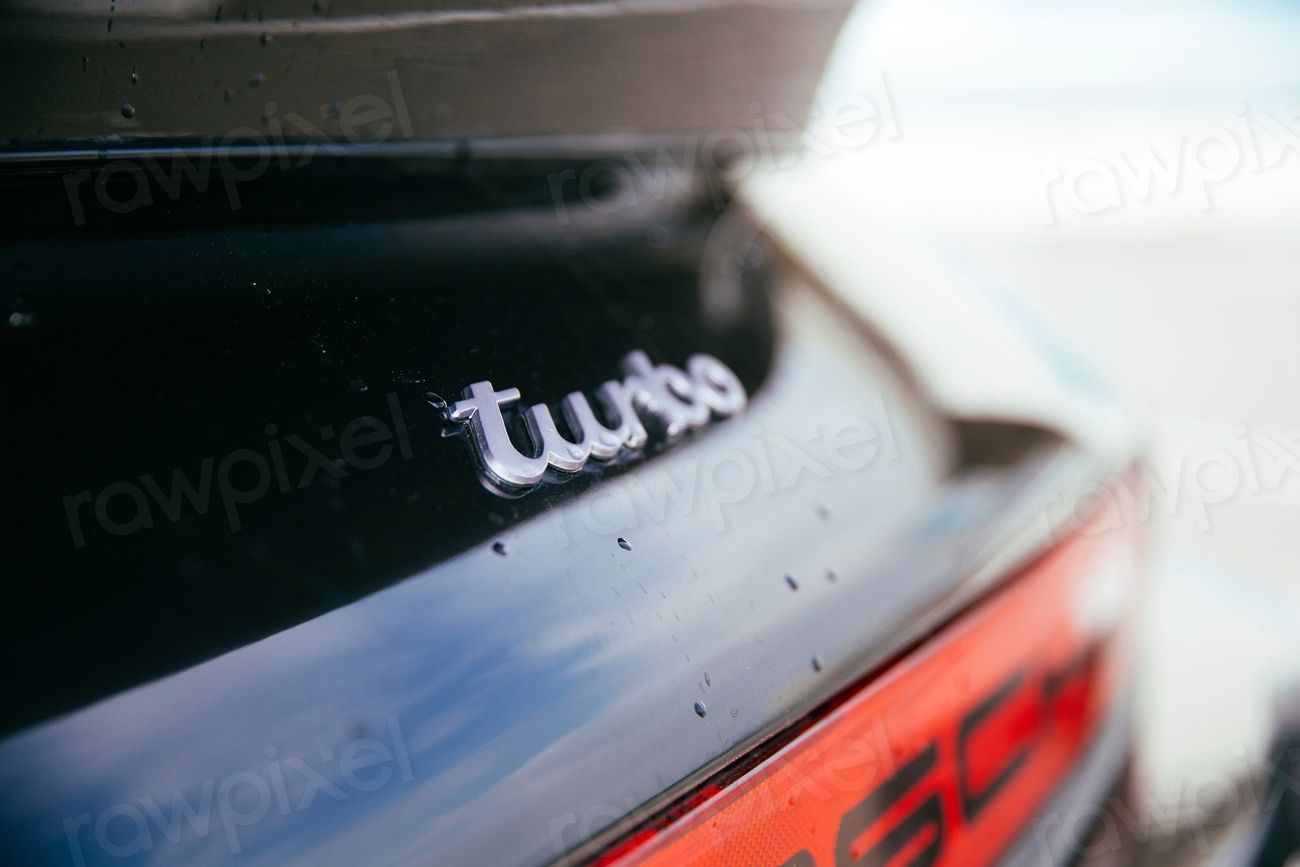
The U.S. auto market in 2025 is a complex landscape, influenced by evolving technology, shifting consumer priorities, and economic pressures. While the allure of a brand-new vehicle can be powerful, an informed decision is paramount to avoid what many Americans come to experience as profound buyer’s remorse. Buying the wrong car often means spending years regretting it, typically because of a significant financial impact. The initial purchase price is just one part of the equation; the ongoing costs of ownership, particularly for maintenance and repairs, can quickly escalate, turning a dream car into a financial burden.
According to Consumer Affairs, the average car costs approximately $900 a year to repair and maintain. However, some vehicles can demand twice that much or even more annually, transforming supposed savings into a drain on your finances. Among major auto brands, the yearly maintenance and repair costs can vary dramatically, from a manageable $576 for Honda to a staggering $1,580 for Land Rover. These figures underscore the critical importance of scrutinizing a vehicle’s long-term reliability before making a commitment.
To empower consumers with reliable, data-driven insights, we’ve compiled a list of cars that, based on extensive testing, surveys, and factual data—including Consumer Reports’ rigorous analysis of least reliable cars and significant consumer feedback—are most likely to lead to regret for buyers in 2025. This in-depth look aims to provide practical, objective information, emphasizing factors like reliability, safety, performance, and overall value, helping you navigate the market and make truly informed purchasing decisions.
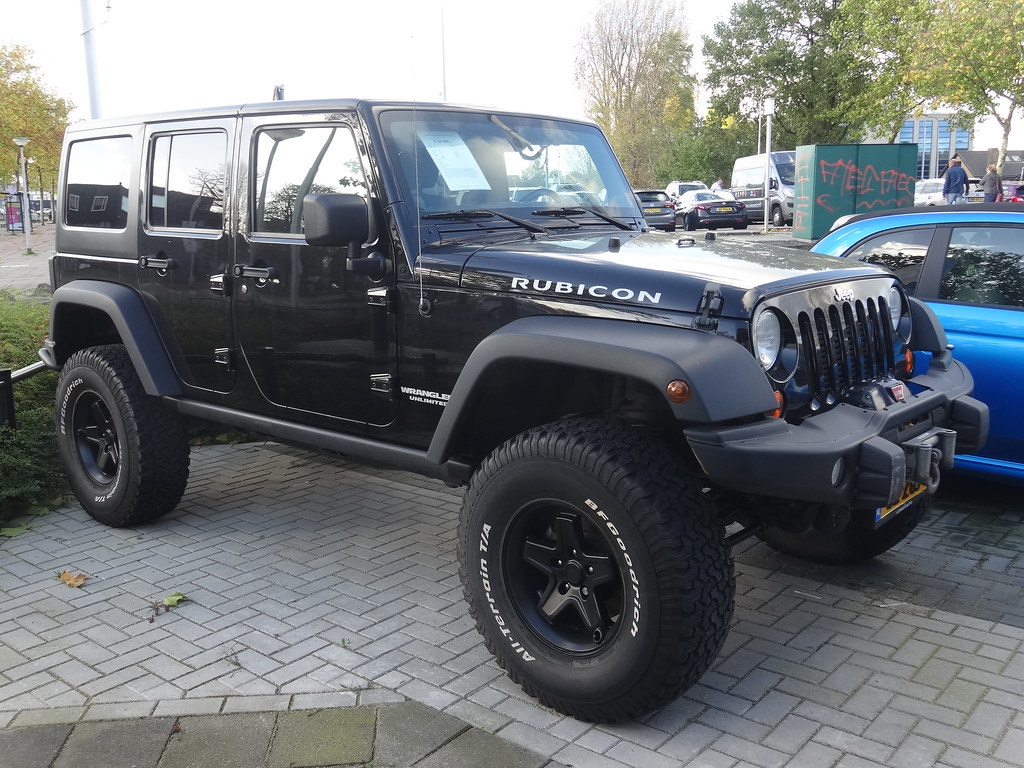
1. **Jeep Wrangler**The Jeep Wrangler holds a special place in the hearts of many driving enthusiasts, celebrated for its iconic off-road capability and distinctive styling. However, this deep affection is increasingly tempered by a growing “love-hate relationship” among owners, largely due to persistent reliability and safety concerns in newer models. While its adventurous spirit is undeniable, the practicalities of long-term ownership present significant challenges that buyers should seriously consider.
Consumer Reports assigns the Wrangler a low reliability score of just 27 out of 100, which is a stark warning for prospective owners. A major area of concern highlighted in testing is the steering and suspension systems. These issues manifest in a phenomenon colloquially known as the “death wobble,” a terrifying oscillation of the front wheels that can occur at highway speeds, raising serious safety questions for drivers and passengers alike.
Beyond the unsettling steering problems, the Wrangler also struggles with its electrical system, leading to various frustrating malfunctions that can impact daily usability. Engine issues have also been noted, contributing to a sense of unreliability under the hood. The drive system, fundamental to its off-road prowess, also presents trouble spots, undermining confidence in its core function.
Furthermore, consumer reports from various sources, including dedicated videos, specifically mention “water intrusion problems,” a particularly vexing issue for a vehicle designed to brave the elements. These widespread issues, from critical mechanical failures to design flaws that allow water into the cabin, make the Jeep Wrangler a vehicle that, despite its emotional appeal, poses a significant risk for buyer’s remorse due to its high price range of $31,995-$91,545 and low overall miles per gallon of 18.
Car Model Information: 2024 Jeep Wrangler Sport
Name: Jeep Wrangler
Caption: Jeep Wrangler Unlimited, Sahara edition
Manufacturer: Jeep
Class: Compact SUV
Production: 1986–present
Predecessor: Jeep CJ
Layout: Front-engine, rear-wheel-drive layout,rear-wheel drive
Chassis: Body-on-frame
Related: AIL Storm
Categories: 1980s cars, 1990s cars, 2000s cars, 2010s cars, All-wheel-drive vehicles
Summary: The Jeep Wrangler is a series of compact and mid-size four-wheel drive off-road SUVs manufactured by Jeep since 1986, and currently in its fourth generation. The Wrangler JL, the most recent generation, was unveiled in late 2017 and is produced at Jeep’s Toledo Complex.
The Wrangler is a direct progression from the World War II Jeep, through the CJ (Civilian Jeeps) produced by Willys, Kaiser-Jeep, and American Motors Corporation (AMC) from the mid-1940s through the 1980s. Although neither AMC nor Chrysler (after it purchased AMC in 1987) have claimed that the Wrangler was a direct descendant of the original military model — both the CJ Jeeps and the conceptually consistent Wrangler, with their solid axles and open top, have been called the Jeep model as central to Jeep’s brand identity as the rear-engine 911 is to Porsche.
Similar to the Willys MB and the CJ Jeeps before it, all Wrangler models continue to use a separate body and frame, rigid live axles both front and rear, a tapering nose design with flared fenders, a fold-flat windshield, and can be driven without doors. Also, with few exceptions, they have part-time four-wheel drive systems, with the choice of high and low gearing, and standard open bodies with removable hard or soft tops. However, the Wrangler series was specifically redesigned to be safer and more comfortable on-road, to attract more daily drivers, by upgrading its suspension, drivetrain, and interior, compared to the CJ line. The suspension on all Wranglers included trackbars and anti-roll bars, and, from the 1997 TJ onwards, front and rear coil springs instead of the previous leaf springs.
From 2004 on, the Wrangler has been complemented with long-wheelbase versions, called Wrangler Unlimited. 2004-2006 models were longer versions with 2 doors. In 2004, only automatic transmission-equipped “Unlimited” versions were sold. In 2005, both an automatic and manual 6-speed (NSG-370) were offered. Since 2007, the long-wheelbase Wranglers were four-door models, offering over 20 in (508 mm) more room. By mid-2017, the four-door models represented three-quarters of all new Wranglers on the market.
Get more information about: Jeep Wrangler
Buying a high-performing used car >>>
Brand: Jeep Model: Wrangler
Price: $28,990 Mileage: 35,157 mi.
Read more about: Beyond the Badge: Uncovering the Hidden Flaws in 14 Fan-Favorite Vehicle Models
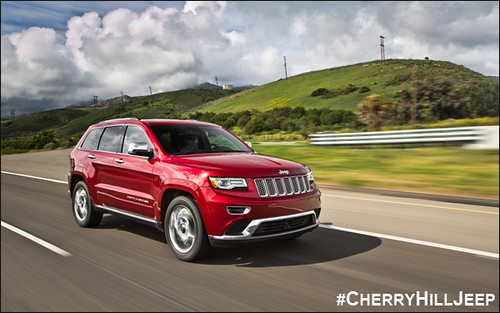
2. **Jeep Grand Cherokee**The Jeep Grand Cherokee aims to strike a balance between rugged capability and everyday comfort, making it a popular choice for families and adventurers alike. Yet, despite its appealing exterior and comfortable interior, the Grand Cherokee, like its Wrangler sibling, faces significant reliability challenges that could lead to considerable regret for buyers in 2025. Its reputation for durability is increasingly being questioned by data from rigorous testing and owner surveys.
Consumer Reports analysis reveals a concerning reliability score of only 26 out of 100 for the Grand Cherokee. This low score is attributed to a broad array of “trouble spots” that affect various critical aspects of the vehicle. Among the most frequently cited issues are problems with the suspension system, which can lead to uncomfortable rides, premature wear, and costly repairs, impacting both comfort and safety over time.
Electrical accessories are another common pain point for Grand Cherokee owners. These can range from minor annoyances like malfunctioning power windows or infotainment glitches to more severe problems that affect essential vehicle functions. The complexity of modern vehicle electronics means that such issues can be difficult and expensive to diagnose and fix, contributing significantly to ownership frustrations.
Further contributing to its low reliability are issues within the drive system and in-car electronics, which are integral to both performance and user experience. Body hardware problems, such as ill-fitting panels or premature wear, along with persistent “noises and leaks,” round out a comprehensive list of concerns. These widespread issues underscore why, despite its strong market presence and price range of $38,035-$74,670, the Grand Cherokee may prove to be a regrettable purchase for many.
Read more about: Beyond the Badge: Uncovering the Hidden Flaws in 14 Fan-Favorite Vehicle Models
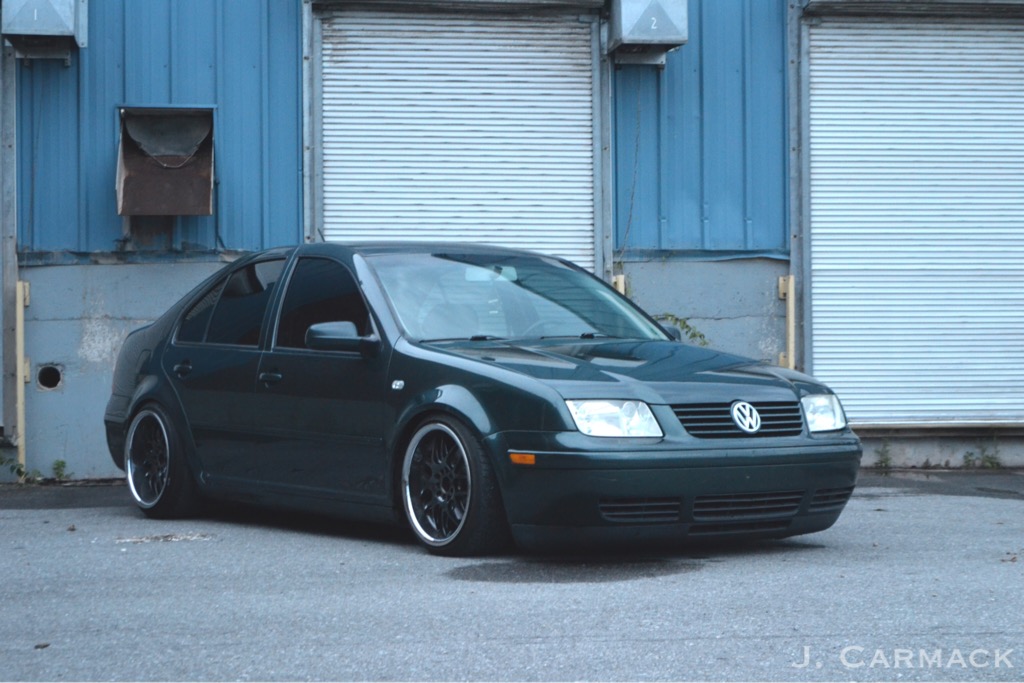
3. **Volkswagen Jetta**The Volkswagen Jetta has long been positioned as a practical, fuel-efficient sedan, appealing to buyers looking for reliable daily transportation with a touch of European driving dynamics. Its affordable starting price and commendable overall miles per gallon of 34 might initially seem attractive, but a deeper look into its reliability data suggests that ownership could come with a notable degree of regret for consumers in 2025.
The Jetta’s reliability score from Consumer Reports stands at a concerning 25 out of 100, placing it among the least reliable vehicles in its segment. One of the most critical trouble spots identified is the braking system. Malfunctions or premature wear in brakes are not just inconvenient; they represent a significant safety concern that requires immediate and often costly attention, directly impacting a driver’s confidence and security on the road.
Beyond fundamental safety components, owners frequently report problems with electrical accessories. These can range from issues with interior lighting and infotainment systems to more significant failures impacting convenience features. Such electrical gremlins often lead to frustrating dealership visits and unexpected repair bills, eroding the perceived value of the vehicle over time.
Furthermore, the Jetta also exhibits trouble spots within its climate system and in-car electronics. A faulty climate control system can greatly diminish comfort, especially during extreme weather conditions, while persistent issues with in-car electronics can detract from the modern driving experience that many buyers expect. For a car in the $21,435-$28,825 price range, these numerous shortcomings make the Jetta a less-than-ideal long-term investment.
Car Model Information: 2011 Volkswagen Jetta SportWagen TDI
Name: Volkswagen Jetta
Production: 1979–present
Class: Compact car
Sp: uk
Categories: 1980s cars, 1990s cars, 2000s cars, 2010s cars, All-wheel-drive vehicles
Summary: The Volkswagen Jetta () is a compact car/small family car manufactured and marketed by Volkswagen since 1979. Positioned to fill a sedan niche slightly above the firm’s Golf hatchback, it has been marketed over seven generations, variously as the Atlantic, Vento, Bora, City Jetta, Jetta City, GLI, Jetta, Clasico, and Sagitar (in China).
The Jetta has been offered in two- and four-door saloon / sedan and sometimes as five-door wagon / estate versions. Since the original version in 1980, the car has grown in size and power with each generation. By mid-2011, almost 10 million Jettas have been produced and sold all over the world. As of April 2014, Volkswagen marketed over 14 million, becoming its top selling model.
Get more information about: Volkswagen Jetta
Buying a high-performing used car >>>
Brand: Volkswagen Model: Jetta
Price: $9,998 Mileage: 92,170 mi.
Read more about: 12 Vehicles That Will Test Your Patience (and Your Wallet) with Never-Ending Electronic Glitches
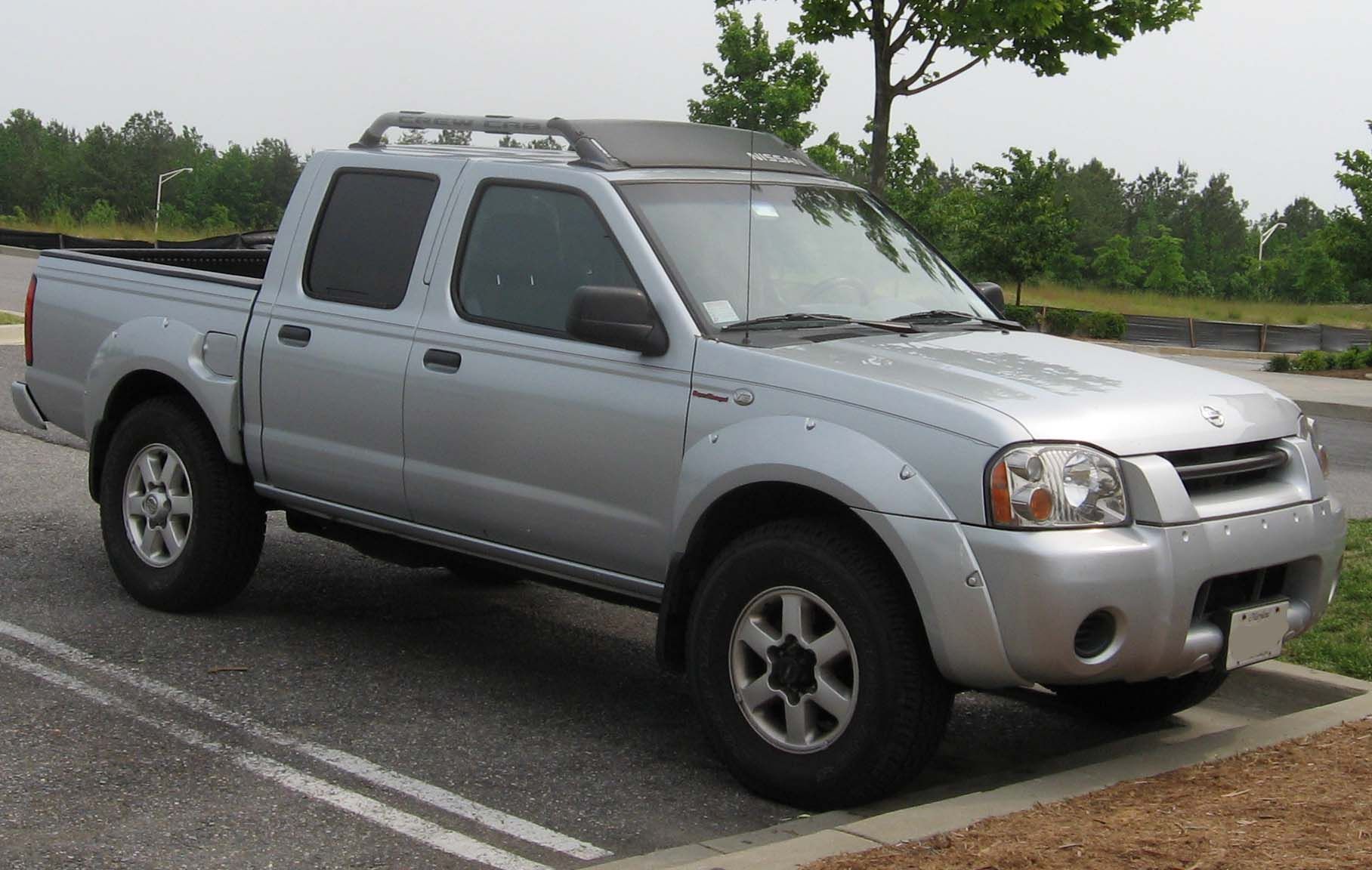
4. **Nissan Frontier**The Nissan Frontier has carved out a niche as a capable mid-size pickup truck, offering a more manageable size than full-size alternatives while still providing utility for work or adventure. However, for those considering a Frontier in 2025, a closer examination of its reliability reveals potential for significant buyer’s remorse. The promise of ruggedness may not fully translate into dependable long-term ownership.
Consumer Reports rates the Nissan Frontier with a low reliability score of just 23 out of 100. This score is particularly alarming given the truck’s purpose, as breakdowns and unexpected repairs can be even more disruptive for a utility vehicle. The most prominent and critical trouble spot identified is the transmission, a core component whose failure can lead to extremely expensive repairs or even render the vehicle inoperable.
In addition to powertrain concerns, the Frontier also suffers from issues related to its electrical accessories. These problems can manifest in various forms, affecting everything from lights and sensors to infotainment features, adding layers of frustration for owners. Such electrical glitches can be difficult to pinpoint and often require specialized diagnostics, increasing repair times and costs.
Another area of concern is the body hardware, which can encompass issues with doors, latches, or trim components that compromise the vehicle’s integrity and aesthetic appeal. For a truck designed for demanding use, these kinds of issues are particularly disappointing. With a price range of $30,510-$43,380 and an overall miles per gallon of 18, the accumulation of these significant reliability concerns positions the Nissan Frontier as a challenging purchase for durability-minded consumers.
Car Model Information: 2016 Nissan Frontier SV
Categories: All set index articles, Articles with short description, Nissan vehicles, Set index articles on cars, Short description is different from Wikidata
Summary: The Nissan Frontier is a nameplate used on three different pickup truck models by Nissan:
Nissan Frontier (international), an alternative nameplate for the NP300/Navara on some markets
Nissan Frontier (North America), a rebadged NP300/Navara from 1997 to 2021, then became a separate model since 2021
Nissan Frontier Pro, a rebadged Dongfeng Z9 PHEV that will be available from 2025.
Get more information about: Nissan Frontier
Buying a high-performing used car >>>
Brand: Nissan Model: Frontier
Price: $16,661 Mileage: 115,564 mi.
Read more about: 12 Cars That Broke Down Within the First Year: Owners Say They’d Never Buy Again
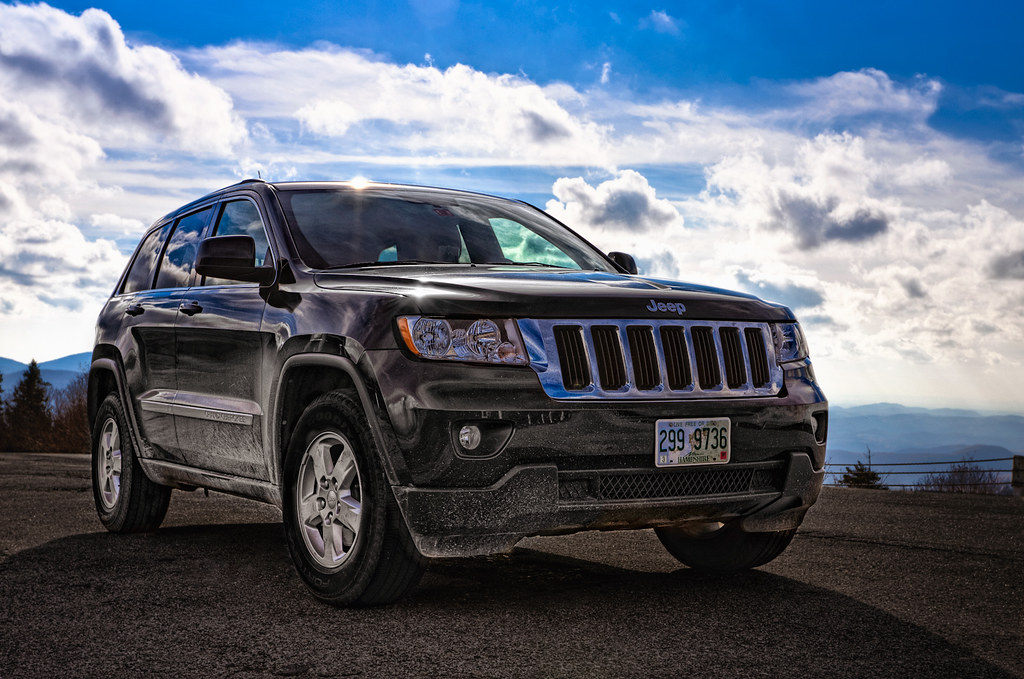
5. **Jeep Grand Cherokee L**Expanding on the popular Grand Cherokee platform, the Jeep Grand Cherokee L introduced a longer wheelbase and a third row of seating, aiming to provide more space and versatility for larger families. However, this extension of size has not translated into an improvement in reliability; instead, it appears to have inherited many of the same issues plaguing its two-row counterpart, making it a potentially regrettable buy in 2025.
The Grand Cherokee L registers an equally low reliability score of 23 out of 100, indicating that the added length does little to mitigate underlying mechanical and electronic vulnerabilities. Persistent problems with the suspension system are a significant concern, affecting ride quality, vehicle stability, and potentially leading to substantial maintenance expenses as components wear prematurely or fail.
Electrical accessories present another pervasive problem area for the Grand Cherokee L. These can range from minor inconveniences with power features to more critical failures that impact the vehicle’s electronic systems. Given the increasing reliance on complex electronics in modern vehicles, these issues can quickly become frustrating and costly to resolve, diminishing the ownership experience.
Moreover, the vehicle exhibits trouble spots in its drive system and in-car electronics, which are crucial for performance and modern connectivity. Owners also report issues with body hardware and the unwelcome presence of “noises and leaks.” For a premium-priced SUV in the $40,035-$64,560 range, with an overall miles per gallon of 19, these numerous and diverse reliability issues make the Grand Cherokee L a vehicle that consumers should approach with caution, as it is highly likely to lead to regret down the road.
Car Model Information: 2021 Subaru Forester Limited
Name: Jeep Grand Cherokee
Manufacturer: Jeep
Production: 1992–present
ModelYears: 1993–present
Class: unbulleted list
BodyStyle: sport utility vehicle
Layout: unbulleted list
Chassis: Vehicle_frame#Uniframe
Categories: 2000s cars, 2010s cars, 2020s cars, All-wheel-drive vehicles, All Wikipedia articles written in American English
Summary: The Jeep Grand Cherokee is a range of mid-sized sport utility vehicles produced by American manufacturer Jeep. At its introduction, while most SUVs were still manufactured with body-on-frame construction, the Grand Cherokee has used a unibody chassis from the start.
Get more information about: Jeep Grand Cherokee
Buying a high-performing used car >>>
Brand: Jeep Model: Grand Cherokee L
Price: $22,899 Mileage: 73,544 mi.
Read more about: Beyond the Badge: Uncovering the Hidden Flaws in 14 Fan-Favorite Vehicle Models
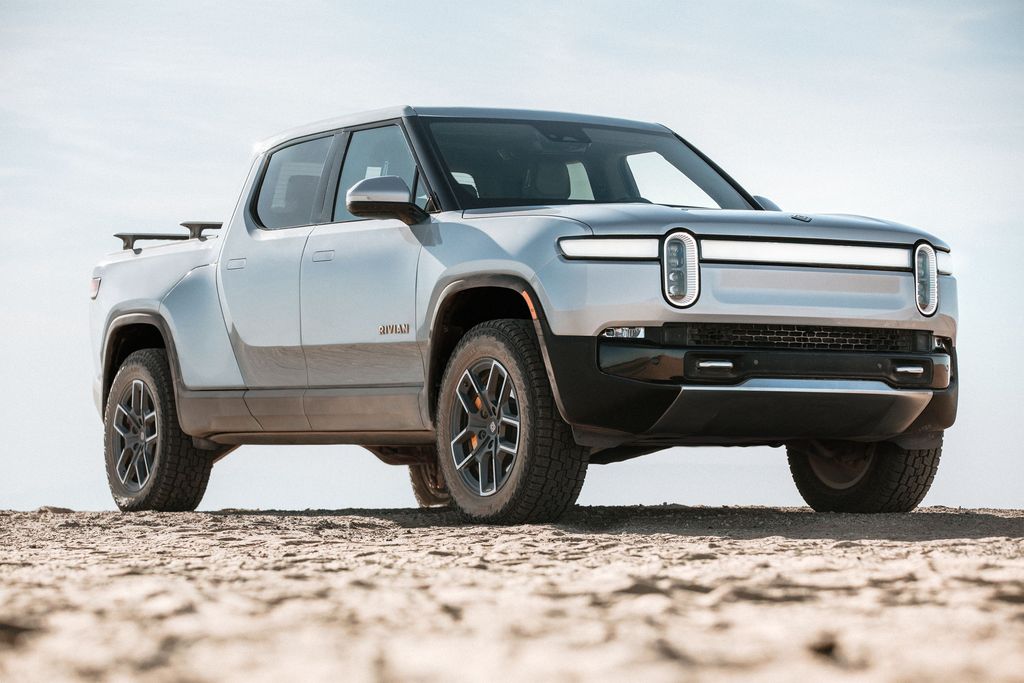
6. **Rivian R1T**The Rivian R1T burst onto the scene as an exciting, innovative all-electric pickup truck, captivating buyers with its rugged styling, impressive performance, and promise of eco-friendly adventure. While it represents the cutting edge of EV technology, the reality of being an early adopter often includes encountering unforeseen challenges. For 2025, the R1T exhibits several reliability issues that could lead to considerable regret for its premium price tag.
Consumer Reports’ analysis gives the Rivian R1T a concerning reliability score of just 22 out of 100, highlighting the growing pains associated with new vehicle platforms and advanced electric powertrains. A primary trouble spot identified is the drive system, which is paramount for an electric vehicle’s performance and functionality. Issues here can severely impact the driving experience and require complex, specialized repairs.
Owners also report problems with the climate system, affecting interior comfort and the efficient management of cabin temperature, which is especially important in an EV where battery range can be influenced by climate control usage. Body hardware issues, such as misaligned panels or quality control lapses, have also been noted, detracting from the vehicle’s overall fit and finish and expected premium feel.
Furthermore, the R1T has been cited for “noises and leaks,” which are particularly disappointing in a vehicle that emphasizes a refined, quiet electric driving experience. For an electric truck in the $69,900-$88,000 price range, these reliability concerns, despite its impressive 70 MPGe, suggest that the R1T may not yet be a fully mature product. Buyers seeking hassle-free ownership might find themselves regretting the investment.
Car Model Information: 2023 Rivian R1T Adventure
Name: Rivian R1T
Manufacturer: Rivian
Production: 2021–present
ModelYears: 2022–present
Assembly: Rivian Automotive,LLC
Designer: Jeff Hammoud
Class: Mid-size car,luxury car,pickup truck
BodyStyle: crew cab
Layout: unbulleted list
Related: Rivian R1S
Motor: Alternating current,Permanent magnet motor
Transmission: Single-speed
Battery: kWh,lithium-ion battery
ElectricRange: unbulleted list
Abbr: on
Charging: unbulleted list
Wheelbase: 135.9 in
Length: 217.1 in
Width: 81.8 in
Height: 75.7 in
Weight: cvt
Sp: us
Powerout: unbulleted list
Chassis: Body-on-frame
Categories: All Wikipedia articles written in American English, All articles with vague or ambiguous time, Articles with short description, Commons category link is on Wikidata, Electric trucks
Summary: The Rivian R1T is a battery electric mid-size light duty luxury pickup truck produced by the American company Rivian. The first production R1T was manufactured in Illinois on September 28, 2021, and was delivered to a customer. The official EPA range for the Rivian R1T (MY 2022–2024) ranges from 255–420 miles (410–676 km), depending on drivetrain, battery pack capacity and wheel size.
Get more information about: Rivian R1T
Buying a high-performing used car >>>
Brand: Rivian Model: R1T
Price: $59,054 Mileage: 12,764 mi.
Read more about: Navigating the Electric Future: Our Expert Picks for the Top 12 EVs You Can Buy Right Now
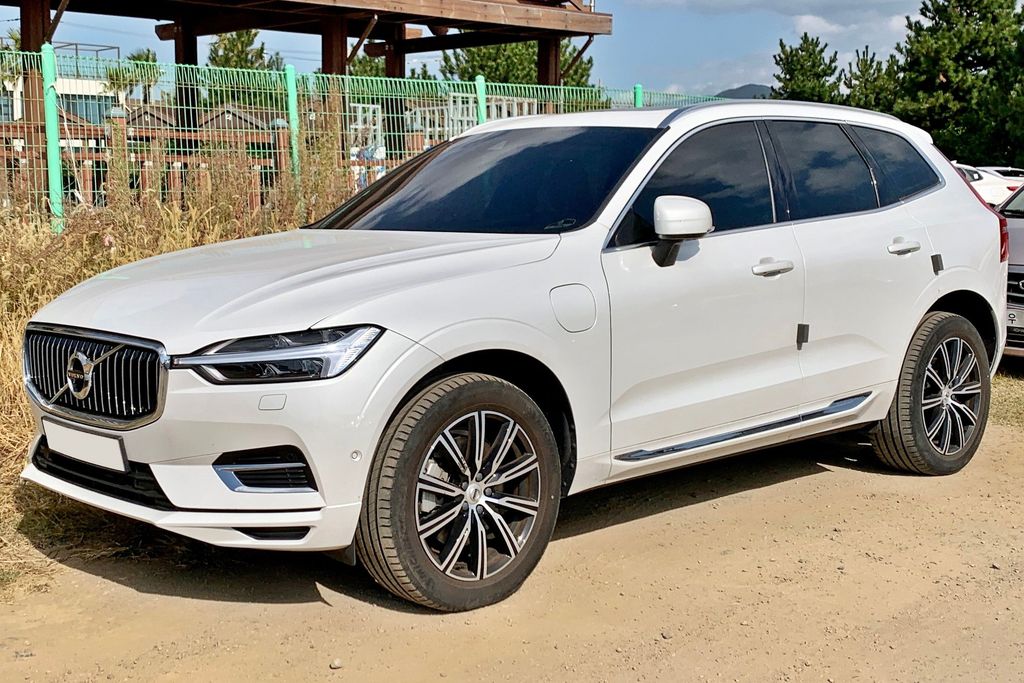
7. **Volvo XC60 Plug-In Hybrid**Volvo has long been synonymous with safety and Scandinavian luxury, and the XC60 Plug-In Hybrid aims to combine these virtues with advanced electrified powertrains. However, integrating complex hybrid technology into a luxury SUV has presented significant reliability hurdles, making it a potential source of buyer’s regret in 2025. Despite its environmental appeal and refined interior, functional consistency remains a challenge.
With a very low reliability score of 21 out of 100 from Consumer Reports, the XC60 Plug-In Hybrid stands out for its numerous shortcomings. Critically, the vehicle experiences trouble spots related directly to its EV battery and EV charging systems. These issues can range from diminished battery capacity over time to problems with charging infrastructure compatibility or internal charging components, directly impacting its electric range and cost-saving benefits.
Beyond the hybrid-specific components, the XC60 also suffers from general electrical accessories problems. These can affect a wide array of systems, from advanced driver-assistance features to infotainment and lighting, leading to frustrating intermittent failures. Such electrical glitches can undermine the sophisticated and dependable experience expected from a luxury brand.
Moreover, the climate system and in-car electronics also present trouble spots, affecting cabin comfort and the seamless integration of technology. For a vehicle with a substantial price range of $59,395-$75,450, and an overall miles per gallon of 28, these pervasive reliability issues, particularly those concerning its core hybrid functionality, are significant detractors. They can quickly turn a premium purchase into a source of constant frustration and unexpected expenses for discerning buyers.
Continuing our critical evaluation, we now shine a spotlight on eight additional vehicles that, based on extensive data and consumer feedback, are likely to lead to significant buyer’s remorse in 2025. This segment will highlight pervasive reliability concerns, software glitches, build quality issues, and the critical disconnect between luxury pricing and actual long-term quality, further empowering you to make truly informed purchasing decisions. Our aim is to provide practical, reliable insights, aligning with Consumer Reports’ commitment to helping you navigate the complexities of the modern auto market.
Car Model Information: 2021 Subaru Forester Limited
Name: Volvo XC60
Caption: 2018 Volvo XC60 R-Design D5 P-Pulse
Manufacturer: Volvo Cars
Production: 2008–present
Class: Compact crossover SUV
BodyStyle: SUV
Layout: unbulleted list
Categories: 2010s cars, 2020s cars, All-wheel-drive vehicles, All Wikipedia articles written in British English, All articles with unsourced statements
Summary: The Volvo XC60 is a compact luxury crossover SUV manufactured and marketed by Swedish automaker Volvo Cars since 2008.
The XC60 is part of Volvo’s 60 Series of automobiles, along with the S60, S60 Cross Country, V60, and V60 Cross Country. The first generation model introduced a new style for the 60 Series models. Along with the rest of the line-up, the first-generation XC60 was refreshed in 2013. Similarly, the second-generation model, released in 2017, is the first in the series. The car was named Car of the Year Japan for 2017–2018.
Get more information about: Volvo XC60
Buying a high-performing used car >>>
Brand: Volvo Model: XC60 Plug-In Hybrid
Price: $22,899 Mileage: 73,544 mi.
Read more about: Expert Picks: The 10 Best Road Trip Cars for 2024 & 2025, Thoroughly Reviewed for Your Next Adventure
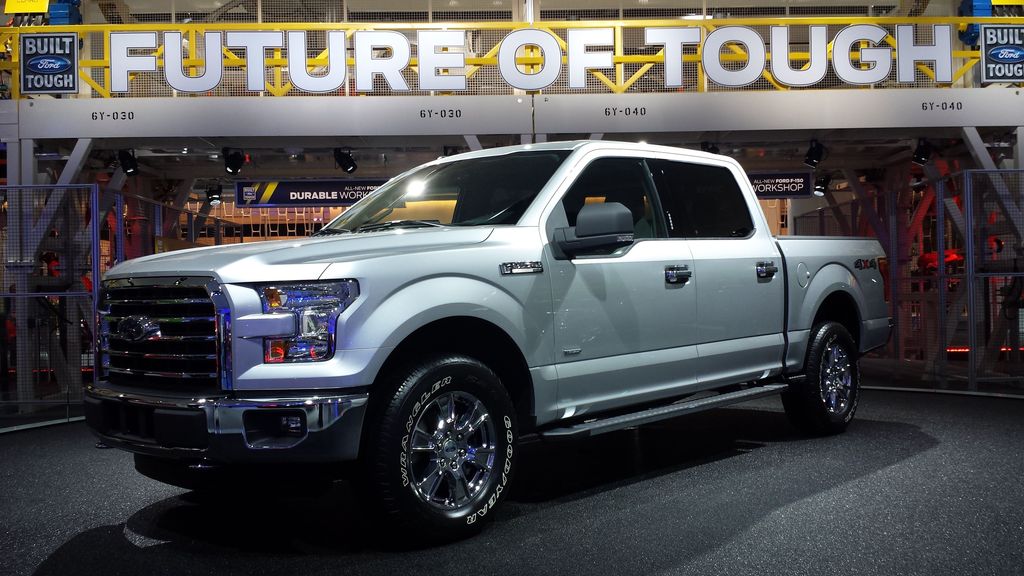
8. **Ford F-150 Hybrid**The Ford F-150 is a perennial best-seller, but its hybrid variant, despite its promise of efficiency and power, is proving to be a significant source of regret for many owners. The integration of advanced hybrid technology into a workhorse truck has introduced a new layer of complexity, leading to a concerning array of reliability issues that undermine its utility and long-term value.
Consumer Reports assigns the Ford F-150 Hybrid a low reliability score of just 19 out of 100, which is particularly troubling for a vehicle so vital to many American households and businesses. A major area of concern is the transmission, a critical component whose malfunction can lead to expensive and time-consuming repairs. This impacts not only the vehicle’s performance but also its reliability for everyday tasks and heavy-duty work.
Beyond mechanical woes, the F-150 Hybrid struggles with its electric system and, more specifically, the electric/hybrid battery. These issues can manifest as reduced efficiency, unexpected power losses, or outright battery failures, directly impacting the vehicle’s unique hybrid advantages. Furthermore, problems extend to general electrical accessories, the drive system, in-car electronics, and even persistent “noises and leaks,” indicating widespread quality control challenges.
For a truck with a broad price range of $36,965-$78,440, these multifaceted reliability issues can quickly erase any perceived savings from its 20 overall miles per gallon. The accumulation of these problems transforms a supposed cutting-edge hybrid work vehicle into a potential financial burden and a source of considerable frustration for owners expecting Ford’s traditional truck toughness.
Car Model Information: 2018 Ford F-150 XLT
Name: Ford F-Series
Caption: 2022 Ford F-150 Lariat Luxury
Manufacturer: Ford Motor Company
Aka: Ford Lobo (Mexico, 1992–present)
Production: 1948–present
Class: Pickup truck#Full-size pickup truck
Layout: Front-engine, rear-wheel-drive layout,rear-wheel drive
Predecessor: 1941 Ford
Categories: All-wheel-drive vehicles, All Wikipedia articles written in American English, All articles that may contain original research, All articles with unsourced statements, Articles that may contain original research from September 2020
Summary: The Ford F-Series is a series of light-duty trucks marketed and manufactured by the Ford Motor Company since model year 1948 as a range of full-sized pickup trucks — positioned between Ford’s Ranger and Super Duty pickup trucks. Alongside the F-150 (introduced in 1975), the F-Series also includes the Super Duty series (introduced in 1999), which includes the heavier-duty F-250 through F-450 pickups, F-450/F-550 chassis cabs, and F-600/F-650/F-750 Class 6–8 commercial trucks.
Get more information about: Ford F-Series
Buying a high-performing used car >>>
Brand: Ford Model: F-150
Price: $26,999 Mileage: 83,365 mi.
Read more about: Navigating the Electric Future: Our Expert Picks for the Top 12 EVs You Can Buy Right Now

9. **Volkswagen Taos**The Volkswagen Taos entered the crowded compact SUV segment promising European flair and practicality, but for prospective buyers in 2025, its notable reliability shortcomings suggest it might deliver more headaches than satisfaction. While its accessible price point might seem appealing, a deeper dive into its performance reveals several critical areas of concern that could lead to significant buyer’s remorse.
With a strikingly low reliability score of 18 out of 100 from Consumer Reports, the Volkswagen Taos is firmly positioned among the least dependable new cars. Its trouble spots are extensive, beginning with the braking system. Malfunctions or premature wear in braking components are not just inconvenient; they pose serious safety risks and necessitate immediate, often costly, professional attention, eroding driver confidence.
Further contributing to its low reliability are issues with electrical accessories, which can affect everything from infotainment functionality to crucial sensors and lighting. The transmission and engine systems, fundamental to the vehicle’s performance and longevity, also present frequent trouble spots. These power-related issues can lead to unpredictable driving behavior and expensive repairs, greatly diminishing the ownership experience.
Additionally, owners report problems with the overall electric system, in-car electronics, and the irritating presence of “noises and leaks.” For a compact SUV in the $23,995 – $33,515 price range, these pervasive and diverse reliability concerns suggest that the Taos, despite its 26 overall miles per gallon, may not be the smart, long-term investment many buyers hope for, turning initial appeal into regret.
Car Model Information: 2022 Volkswagen Taos 1.5T S
Name: Volkswagen Taos/Tharu
Manufacturer: Volkswagen
Aka: Volkswagen Tharu
Production: ubl
Assembly: ubl
Designer: Klaus Zyciora
Class: Compact crossover SUV
BodyStyle: SUV
Layout: Front-engine, front-wheel-drive,Front-engine, all-wheel-drive
Platform: Volkswagen Group MQB A1
Related: SEAT Ateca,Škoda Karoq,Jetta VS5
Engine: Petrol engine,Turbocharger,1.4 L TSI 150 I4,1.5 L TSI 160 I4,Multi-point fuel injection,2.0 L TSI 190 I4
Transmission: Manual transmission
Battery: 44.1 kWh (e-Tharu)
ElectricRange: convert
Wheelbase: 105.9 in
Abbr: on
Order: 4453 mm
Length: 175.8 in
Width: 1841 mm
Height: convert
ModelYears: 2022–present
Categories: All-wheel-drive vehicles, All Wikipedia articles written in British English, Articles with short description, CS1 Brazilian Portuguese-language sources (pt-br), CS1 Mexican Spanish-language sources (es-mx)
Summary: The Volkswagen Taos is a compact crossover SUV marketed by Volkswagen. It was first released in October 2018 as the Volkswagen Tharu in China, while the Taos was released in October 2020 as a restyled version of the Tharu for the North American, South American, and Russian markets. In the brand’s lineup, the vehicle is positioned below the Tiguan, and in South America and China above the T-Cross. It is not marketed in core European market.
The Taos is named after Taos, New Mexico. The Tharu name is derived after the eponymous Tharu people, an ethnic group indigenous to Nepal and Northern India.
Get more information about: Volkswagen Taos
Buying a high-performing used car >>>
Brand: Volkswagen Model: Taos
Price: $20,000 Mileage: 10,385 mi.
Read more about: Steer Clear: 11 New Popular Cars You Should Avoid at All Costs, According to Experts
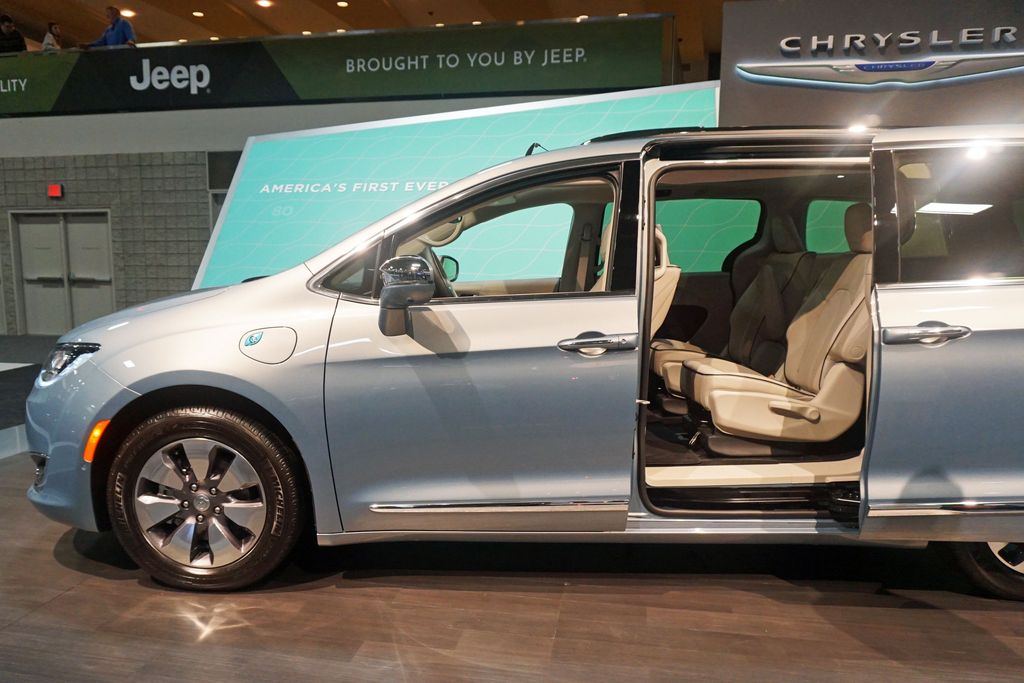
10. **Chrysler Pacifica Hybrid**The Chrysler Pacifica Hybrid aims to offer a compelling blend of family-friendly versatility and fuel efficiency, standing out in the minivan segment. However, for 2025, its highly complex hybrid powertrain and advanced electronics are proving to be its Achilles’ heel, resulting in an alarming level of unreliability that makes it a prime candidate for buyer’s remorse.
Earning an exceptionally low reliability score of just 14 out of 100 from Consumer Reports, the Pacifica Hybrid ranks as one of the least reliable vehicles available. Its most critical and frequently cited trouble spots are directly related to its core hybrid functionality: the electric/hybrid battery, electric charging system, and the electric motor itself. Failures or inefficiencies in these components can severely impact its electric range, fuel economy benefits, and overall operational integrity.
Beyond these powertrain-specific issues, the Pacifica Hybrid also suffers from pervasive problems with its in-car electronics. In a vehicle designed for modern families, with multiple screens and connectivity features, malfunctioning infotainment systems, unresponsive controls, or electrical glitches can quickly transform a convenient feature into a major source of frustration and distraction. Diagnosing and resolving these complex electronic issues often requires specialized expertise and can incur significant repair costs.
Given its premium price range of $39,645-$59,785, and despite its commendable 27 overall miles per gallon, the consistent and severe reliability problems — particularly those concerning its crucial hybrid components and sophisticated electronics — make the Chrysler Pacifica Hybrid a high-risk purchase. Families seeking dependable transportation should approach this model with extreme caution, as the potential for ongoing expenses and operational headaches is substantial.
Car Model Information: 2021 Subaru Forester Limited
Name: Chrysler Pacifica (RU)
Manufacturer: Chrysler (automotive brand)
Aka: Chrysler Voyager,Chrysler Grand Caravan (Canada, 2021–present)
Production: 2016–present
ModelYears: 2017–present
Assembly: Windsor, Ontario
Designer: Irina Zavatski,Winnie Cheung (interior)
Class: Minivan
BodyStyle: 5-door minivan
Layout: Front-engine, front-wheel drive,Front-engine, all-wheel drive
Platform: Compact U.S. Wide platform
Related: Chrysler 200#Second generation (2014–)
Engine: Chrysler Pentastar engine#3.6L,FCA Global Medium Engine
Motor: 2x electric motors (SiEVT main motor & motor generator; PHEV)
Transmission: ZF 9HP transmission,automatic transmission,Continuously variable transmission
Drivetrain: PHEV
ElectricRange: cvt
Battery: val,lithium-ion battery
Wheelbase: 3089 mm
Abbr: on
Order: flip (hybrid)
Length: 203.6 in
Width: 79.6 in
Height: convert
Weight: {{convert,1964,kg,lb,abbr=on,order=flip
Predecessor: Chrysler minivans (RT)
Categories: 2010s cars, All-wheel-drive vehicles, Articles with short description, CS1 Spanish-language sources (es), Cars introduced in 2016
Summary: The Chrysler Pacifica is a minivan produced by the Chrysler division of Stellantis since the 2017 model year. Replacing the Chrysler Town & Country, the Pacifica is the sixth generation of Chrysler minivans, taking its name from the 2004–2008 product line. Along with serving as the first minivan with a plug-in hybrid drivetrain, the Pacifica has also served as a platform for autonomous vehicle development.
For the 2020 model year, Chrysler repackaged the lower-trim versions of the Pacifica as a revived Chrysler Voyager, largely to expand fleet sales of the model line; following the retirement of the Dodge Grand Caravan, the Chrysler Voyager was introduced in Canada for 2021 as the Chrysler Grand Caravan (moving the nameplate from Dodge to Chrysler after 36 years). Following the retirement of the Chrysler 300 sedan, the Pacifica/Voyager/Grand Caravan is currently the only vehicle marketed by Chrysler.
Chrysler has assembled the Pacifica minivan (and the Voyager/Grand Caravan) in its Windsor Assembly facility in Ontario (home to Chrysler minivan assembly since 1983).
Get more information about: Chrysler Pacifica (minivan)
Buying a high-performing used car >>>
Brand: Chrysler Model: Pacifica Hybrid
Price: $22,899 Mileage: 73,544 mi.
Read more about: From Showroom Shine to Garage Grind: 15 Vehicles That Left Owners Longing for a Refund
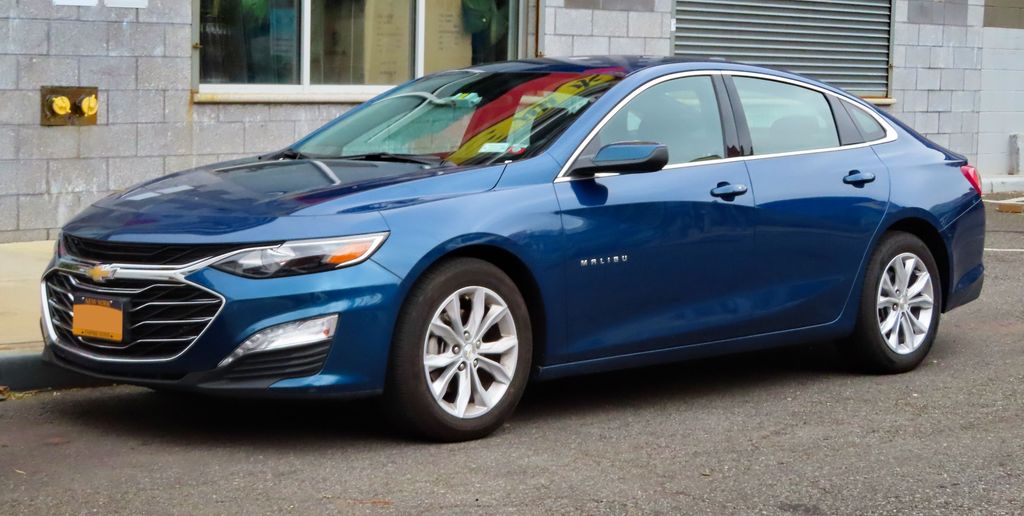
11. **Chevrolet Malibu**The Chevrolet Malibu, once a solid midsize sedan, now finds itself largely walked away from by American consumers in 2025, a trend that could easily lead to buyer’s regret for those who still opt for it. The primary driver behind its decline is the significant market pivot towards SUVs and crossovers. With buyers increasingly prioritizing cargo space, higher driving positions, and all-wheel-drive options, the Malibu offers little compelling reason for selection over similarly priced utility vehicles.
Chevrolet’s strategy of minimal updates in recent years has only exacerbated the Malibu’s predicament, making it feel distinctly dated when compared to its contemporary rivals. While the 2024 model may still be approaching a decade in its current form, it struggles to offer the fresh, modern appeal that today’s car buyers expect. This lack of evolution means its features, design, and technology often fall behind industry standards.
Furthermore, the interior quality of the Malibu is frequently cited as a weakness, with an abundance of low-grade plastics detracting from the overall cabin experience. Its list of standard features also appears slimmer compared to well-rounded packages offered by competitors like the Honda Accord and Hyundai Sonata. For a car in the $26,195-$32,595 range, these shortcomings can make ownership feel like a compromise, fostering regret as owners realize they could have had more for their money.
While the Malibu offers adequate performance from its turbocharged four-cylinder engine and comfortable ride, it ultimately falls short in critical areas of modern consumer expectation. Its inability to keep pace with evolving market demands and its dated feel make it a vehicle that, despite its respectable qualities, can leave buyers wishing they had explored more contemporary alternatives.
Car Model Information: 2020 Chevrolet Malibu FWD LT
Name: Chevrolet Malibu
Manufacturer: Chevrolet
ModelYears: 1964–1983,1997–2025
Class: Mid-size car
Layout: Front-engine, rear-wheel-drive layout
Predecessor: Chevrolet Chevelle
Successor: Chevrolet Celebrity
Caption: Ninth generation Chevrolet Malibu
Categories: 1970s cars, 1980s cars, 1990s cars, 2000s cars, 2010s cars
Summary: The Chevrolet Malibu is a mid-size car that was manufactured and marketed by Chevrolet from 1964 to 1983 and from 1997 to 2025. The Malibu began as a trim-level of the Chevrolet Chevelle, becoming its own model line in 1978. Originally a rear-wheel-drive intermediate, GM revived the Malibu nameplate as a front-wheel-drive car in 1997.
Named after the coastal community of Malibu, California, the Malibu has been marketed primarily in North America, with the eighth generation introduced globally. Malibu production in the US ended in November 2024, as the Fairfax plant is being retooled for the upcoming second-generation Chevrolet Bolt. The Malibu is now the last sedan to have been sold by Chevrolet in the US.
Get more information about: Chevrolet Malibu
Buying a high-performing used car >>>
Brand: Chevrolet Model: Malibu
Price: $15,173 Mileage: 74,813 mi.
Read more about: Hidden Powerhouses: Unearthing 14 Underrated Pony Cars You Forgot Existed
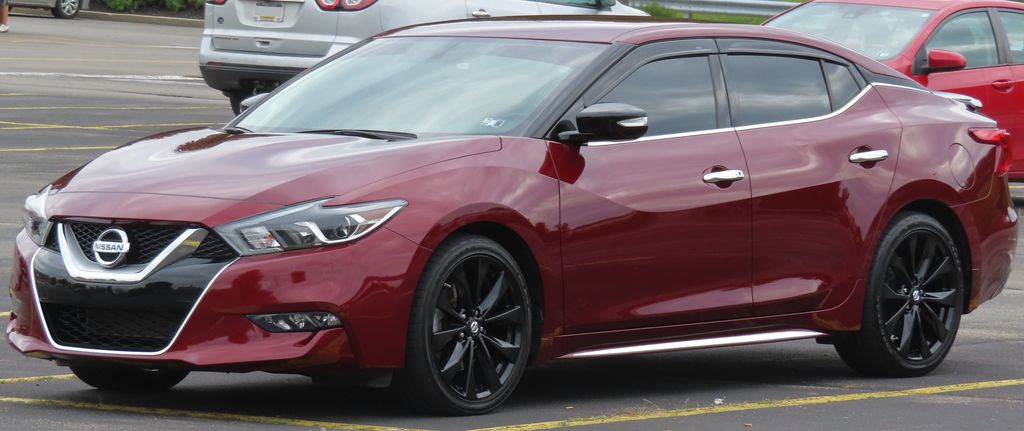
12. **Nissan Maxima**The Nissan Maxima, once hailed as Nissan’s flagship sedan and a sporty option in its class, has also fallen out of favor with American consumers, becoming a regrettable purchase for many in 2025. Its decline is primarily attributed to the overwhelming consumer preference for crossovers, such as Nissan’s own Rogue and Pathfinder, which offer greater versatility and interior space at competitive price points.
Despite its strong 3.5-liter V-6 engine delivering 300 horsepower and brisk acceleration, the Maxima’s performance attributes weren’t enough to counteract its high fuel consumption. In an era where efficiency is increasingly paramount, the Maxima’s thirst for fuel became a significant drawback. Furthermore, the continuously variable automatic transmission (CVT), while aiding power delivery, somewhat undermined the sports-sedan character that the engine aimed to provide, creating a disconnect for driving enthusiasts.
Another critical factor contributing to buyer’s remorse is the Maxima’s relatively cramped interior space when compared to similarly priced SUVs. For families or those needing ample passenger and cargo room, the sedan form factor simply couldn’t compete. Nissan’s decision to wind down production of the Maxima also made buyers hesitant, signaling an uncertain future for parts availability and resale value.
While the Maxima offered sharp handling and minimal body roll for its size, its firmly tuned suspension could also be too stiff for some in this segment, impacting ride comfort. The combination of declining market relevance, high fuel costs, and a looming discontinuation makes the Maxima a choice that many buyers might ultimately regret, as its unique appeal no longer outweighs its practical drawbacks in the current market.
Car Model Information: 2022 Nissan Maxima SV
Manufacturer: Nissan
Aka: Datsun Maxima (1981–1984)
Production: 1980–2023
ModelYears: 1981–2023
Class: Mid-size (1981–2003),Full-size (2004–2023)
Layout: Front-engine, rear-wheel-drive
Predecessor: Datsun 810
Caption: 2021 Nissan Maxima SV (A36; US)
Categories: 1990s cars, 2000s cars, 2010s cars, 2020s cars, All articles with dead external links
Summary: The Nissan Maxima is a five-passenger, front-engine, mid-size car that was manufactured and marketed by Nissan as Nissan’s flagship sedan primarily in North America, the Middle East, South Korea, and China — across eight generations. The Maxima debuted for model year 1982 as the Datsun Maxima, replacing the Datsun 810.
The Maxima was marketed as an upscale alternative to the Altima and prior to 1993, the Stanza, distinguished by features such as a premium interior and V6 engine. Most Maximas were built in Oppama, Japan, until North American assembly began in Smyrna, Tennessee, for the 2004 model year.
For the US and Canada, Nissan ended production of the Maxima in July 2023.
Outside North America, the Maxima nameplate has also been applied to variants or trim levels of several other models.
Get more information about: Nissan Maxima
Buying a high-performing used car >>>
Brand: Nissan Model: Maxima
Price: $17,500 Mileage: 70,772 mi.
Read more about: 12 Cars That Broke Down Within the First Year: Owners Say They’d Never Buy Again
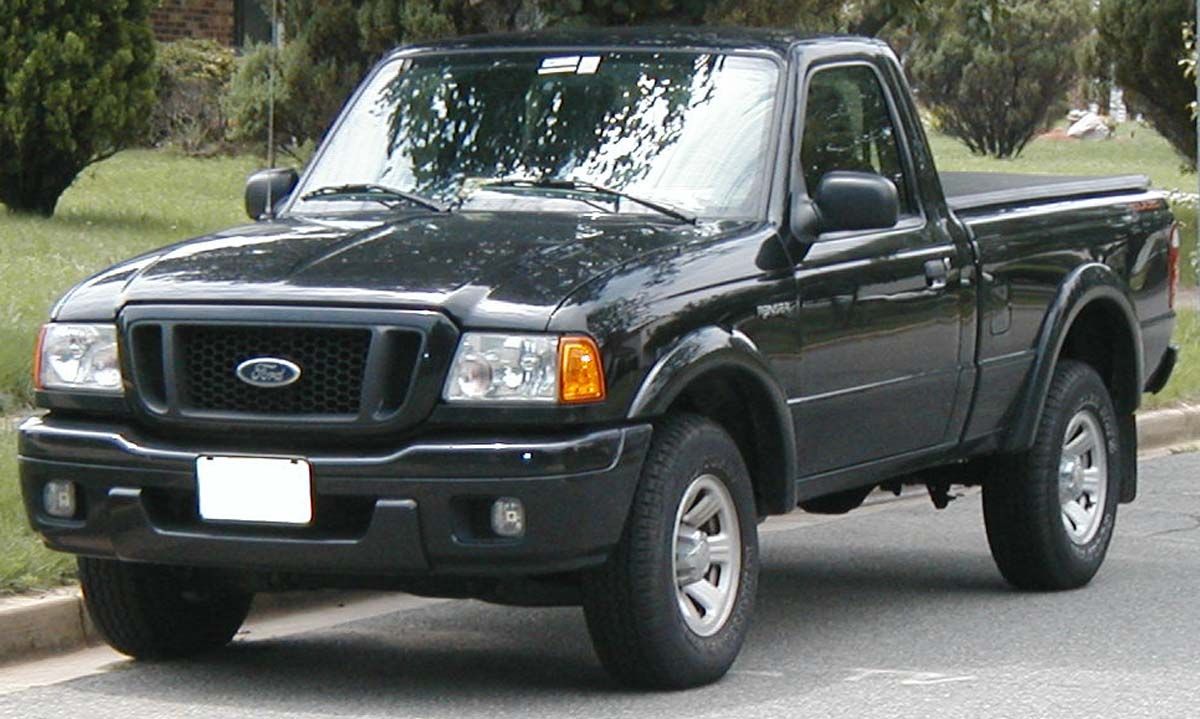
13. **Ford Edge**The Ford Edge is currently grappling with an identity crisis in the 2025 auto market, making it a vehicle that many Americans are choosing to walk away from, and potentially regret buying. It finds itself in an awkward middle ground: it’s larger and more expensive than popular compact SUVs, yet it conspicuously lacks the third row of seating that defines a true midsize family hauler. This positioning leaves it struggling to compete effectively against rivals on either side of its segment.
With Ford increasingly channeling its focus towards electric vehicles and the burgeoning popularity of models like the Bronco Sport, the Edge has become a particularly hard sell. Its aging design, which has seen minimal updates since 2019, further diminishes its appeal. In a market constantly seeking fresh aesthetics and cutting-edge technology, the Edge’s static appearance makes it feel outdated and less desirable to modern buyers.
Despite offering a spacious cabin, a well-finished interior, and a large cargo area, the Edge’s starting price is notably higher than some excellent three-row rivals, such as the Kia Telluride and Hyundai Palisade. This price disparity, combined with its two-row configuration, means buyers often feel they are paying a premium without receiving the full utility or latest innovations available elsewhere, leading to a sense of missed opportunity.
For those seeking more performance, the ST trim with its 335-hp twin-turbo V-6 offers genuine sportiness, but its price places it directly in competition with more luxurious alternatives like the Lincoln Nautilus. Ultimately, the Ford Edge’s inability to carve out a compelling niche, coupled with its aging design and price point, makes it a car that many consumers regrettably bypass or wish they had, in favor of more relevant and value-driven options.
Car Model Information: 2018 Ford Edge SEL
Name: Ford Edge
Caption: 2019 Ford Edge SEL EcoBoost AWD (US)
Manufacturer: Ford Motor Company
Production: 2006–present
ModelYears: 2007–2024 (CAN/US),2016–2021 (Europe),2015–2019 (UK)
Class: Mid-size crossover SUV
BodyStyle: SUV
Layout: Front-engine, front-wheel-drive layout
Categories: 2010s cars, 2020s cars, All-wheel-drive vehicles, All articles with unsourced statements, Articles with short description
Summary: The Ford Edge is a crossover SUV manufactured and marketed by the Ford Motor Company introduced for the 2007 model year as the first mid-size CUV marketed by Ford in North America. Deriving its name from a trim package of the Ford Ranger, the Ford Edge is positioned between the Ford Escape and the Ford Explorer within the Ford product line.
Production of the North American Edge ended in April 2024, with the third generation Edge (dubbed the Edge L), launched in 2023, being produced and sold exclusively in China.
Sharing its underpinnings with the Ford Fusion sedan, Ford also marketed a rebadged variant as the Lincoln MKX (since 2019, the Lincoln Nautilus). The second generation is also marketed by Ford of Europe, positioned between the Kuga (Escape) and the Explorer PHEV.
Manufacturing of the first two generations took place at Oakville Assembly (Oakville, Ontario) alongside the Nautilus.
Get more information about: Ford Edge
Buying a high-performing used car >>>
Brand: Ford Model: Edge
Price: $11,480 Mileage: 102,923 mi.
Read more about: Vanishing Acts: 10 Famous Actors Who Disappeared After One Huge Hollywood Hit
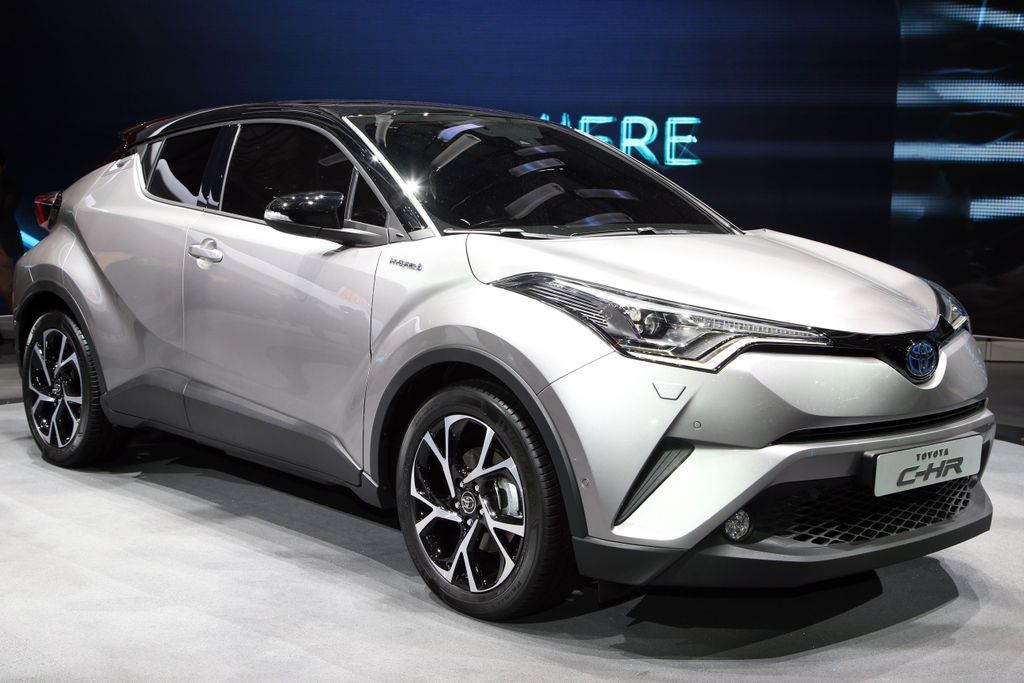
14. **Toyota C-HR**Initially, the Toyota C-HR captured attention with its bold and distinctive styling, aiming to attract younger buyers seeking a unique compact crossover. However, by 2025, the enthusiasm has waned considerably, and it has become a vehicle that Americans have largely walked away from, often leading to regret for those who initially bought into its aesthetic. Its foundational limitations quickly overshadowed its visual appeal.
Crucially, the lack of all-wheel drive (AWD) significantly hampered its appeal for many consumers, particularly in regions where adverse weather conditions make AWD a highly desirable or even necessary feature. This omission placed it at a disadvantage against numerous competitors in its segment. Furthermore, its modest performance did little to compensate for this deficit, leaving many drivers wanting more power and responsiveness from their daily vehicle.
In the rapidly evolving Toyota lineup, the C-HR began to feel redundant and overpriced for its size, especially with the introduction of the more practical and well-rounded Corolla Cross. Toyota’s robust hybrid lineup also offered more efficient and versatile options, effectively pushing the C-HR further into the background. Buyers seeking either utility or fuel efficiency found better value and more modern choices within Toyota’s own expanding portfolio.
While the 2025 Toyota C-HR+ is making an all-electric debut, featuring a stronger drivetrain and modern interior, the original C-HR’s fate as a model that consumers regrettable overlooked due to its inherent limitations remains a cautionary tale. The bold styling alone was not enough to sustain its appeal against a tide of more functionally competitive and better-value alternatives, cementing its status as a car many regret choosing.
Car Model Information: 2021 Toyota C-HR Nightshade Edition
Name: Toyota C-HR
Caption: Toyota C-HR 1.8 Hybrid (ZYX20, Europe)
Manufacturer: Toyota
Aka: FAW Toyota
Production: 2016–present
Class: Subcompact crossover SUV
BodyStyle: SUV
Platform: Toyota TNGA-C platform
Layout: unbulleted list
Categories: 2020s cars, ASEAN NCAP small off-road, All-wheel-drive vehicles, All Wikipedia articles written in British English, All articles with dead external links
Summary: The Toyota C-HR (Japanese: トヨタ C-HR, Hepburn: Toyota Shīeichiāru) is a subcompact crossover SUV manufactured and marketed by Japanese automaker Toyota since 2016. Since 2020, it is positioned between the Yaris Cross and Corolla Cross in Toyota’s crossover SUV range.
The first-generation C-HR was available in many regions, including Japan, China, North America, Europe, Southeast Asia, and Australasia, and was produced in four countries. Since the release of the second-generation C-HR in 2023, availability of the C-HR has been limited to Europe and Australia, with production centralised in Turkey. The Corolla Cross, released in 2020, has largely taken over the model’s positioning outside Europe.
Get more information about: Toyota C-HR
Buying a high-performing used car >>>
Brand: Toyota Model: C-HR
Price: $19,500 Mileage: 85,095 mi.
Read more about: 12 New Cars Named ‘Best Buys’ for 2025: An Expert Guide for Savvy Shoppers

15. **Chrysler 300**The Chrysler 300, despite its muscular V8 option and classic American sedan charm, is a vehicle that has been largely abandoned by American consumers by 2025, making it a highly regrettable purchase for those holding onto its legacy. Its most significant drawback is its age: the vehicle had not seen a major redesign in over a decade, meaning its platform and underlying technology were fundamentally outdated in a rapidly advancing automotive landscape.
In an era dominated by fuel-conscious shoppers and stringent emissions regulations, the 300’s aging platform and consistently low miles per gallon made it an easy pass for most buyers. The financial burden of higher fuel costs, coupled with its dated technology, rendered it an impractical choice for those seeking modern efficiency and connectivity. While a powerful V8 offered a thrilling drive, it came at a premium that fewer consumers were willing to pay given the car’s other limitations.
Even with a spirited farewell tour in 2023, introducing the high-performance 300C with a 6.4-liter V8, these final-year additions could not reverse a decade of stagnation. The core issues of an outdated design and inefficient powertrains persisted across the rest of the lineup. While it offered a spacious, comfortable interior, it simply could not match rivals in terms of contemporary tech features or overall value proposition.
For those who still value the presence of a traditional full-size sedan, the 300 might have held a nostalgic appeal. However, its continued reliance on an aging platform and its poor fuel economy in a market demanding innovation and efficiency made it a vehicle that ultimately proved to be a source of regret for buyers who overlooked its fundamental obsolescence in favor of its past glory.
The U.S. auto market is undeniably in a state of rapid transformation, marking a pivotal moment where the final chapters of the traditional gas era are overlapping with the exhilarating growth of electric innovation. The cars highlighted in this comprehensive list—both those with severe reliability issues and those that have simply fallen out of step with consumer demands—serve as a crucial reminder. In 2025, buying a car isn’t just about the initial appeal; it’s about making a foresightful investment that aligns with evolving technology, economic realities, and long-term satisfaction.
Read more about: Beyond the Badge: Uncovering the Hidden Flaws in 14 Fan-Favorite Vehicle Models
As consumers, our power lies in informed decision-making. Whether it’s scrutinizing reliability scores, assessing the true cost of ownership beyond the sticker price, or recognizing when a model has simply been left behind by innovation, diligence is paramount. These vehicles, each problematic in its own way, illustrate a clear truth: to avoid buyer’s remorse, we must look beyond the hype and prioritize genuine value, sustained quality, and modern relevance. Don’t let your next purchase become a source of regret; arm yourself with knowledge and drive confidently into the future of mobility. The market is changing fast, and staying informed is your best defense against a regrettable buy.

